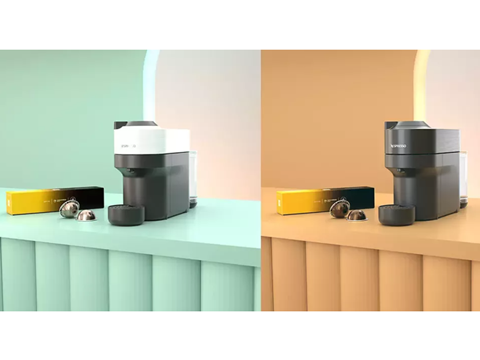
Nestlé’s new AI-powered, in-house service utilizes digital twins to digitally adjust or localize packaging for seasonal campaigns, channel-specific formats like e-commerce and digital media, and other redesign requirements.
Created in partnership with Accenture Song, the content service is designed to generate 3D replicas of physical products, thus enabling users to adjust packaging designs and other creative content without needing to restart from scratch.
As a result, Nestlé expects to keep its brands up to date in an ever-evolving, fast-moving digital environment, ‘where campaigns on social media platforms and streaming services now often require six or more different ad formats to be successful and where product packaging is changed constantly.’
Right now, Nestlé claims to have reached a baseline of 4,000 3D digital master products, predominantly for global brands like Purina, Nescafé Dolce Gusto, and Nespresso. It aspires to convert 10,000 products into digital twins within the next two years across its local and global brands, with the new service set to lower the time and cost of scaling digital twins by over 70%.
This process will facilitate faster, higher-quality, and more cost-effective creation of assets, Nestlé claims. It is also hoped to make asset redesign more accessible to content creators across the company.
Its Integrated Marketing Services (IMS) currently comprises 250 marketing experts in seven marketing hubs – this team being responsible for the scaling and localizing of content via digital twins – and 45 global content studios producing creating assets for Nestlé brands.
The service was developed in OpenUSD, utilizing NVIDIA Omniverse for advanced digital twin creation and NVIDIA AI Enterprise for Generative AI, and is hosted on Microsoft systems for ‘robust’ cloud infrastructure.
“We want to connect with consumers where they are and how they want, with the right message at the right time,” explained David Rennie, head of Strategic Business Units, Marketing and Sales at Nestlé. “That means providing engaging content in multiple formats to fit the wide variety of online media platforms and formats available.
“Our new content organization means we can do more with the talented teams we have, leveraging their skills to produce high-quality, consistent, scalable content supported by AI digital assistants and digital twin technologies. This is a big step forward in our journey to reimagine content creation and deliver exceptional digital experiences.”
Another development from X-Rite and Esko, the eXact 2 handheld spectrophotometer combined with Esko’s Print Clone software, utilizes AI in a bid to help digital press printers simplify and accelerate colour matching in digital product environments. While eXact 2 measures physical print samples, PDF files can be uploaded into Print Clone, wherein AI-powered algorithms calculate the target colour profile to ensure digital press output meets brand specifications.
In a different application of AI, Palantir Technologies plans to help Fedrigoni acclerate its stock optimization and demand forecasting through a multi-year partnership. Fedrigoni aims to improve its responsiveness to market dynamics and enhance its ability to anticipate and meet customer demands.
If you liked this story, you might also enjoy:
The ultimate guide to the Packaging and Packaging Waste Regulation in 2025
How are the top brands progressing on packaging sustainability?
Everything you need to know about global packaging sustainability regulation in 2025
The key to increasing the use of reusable packaging in supermarkets


















No comments yet